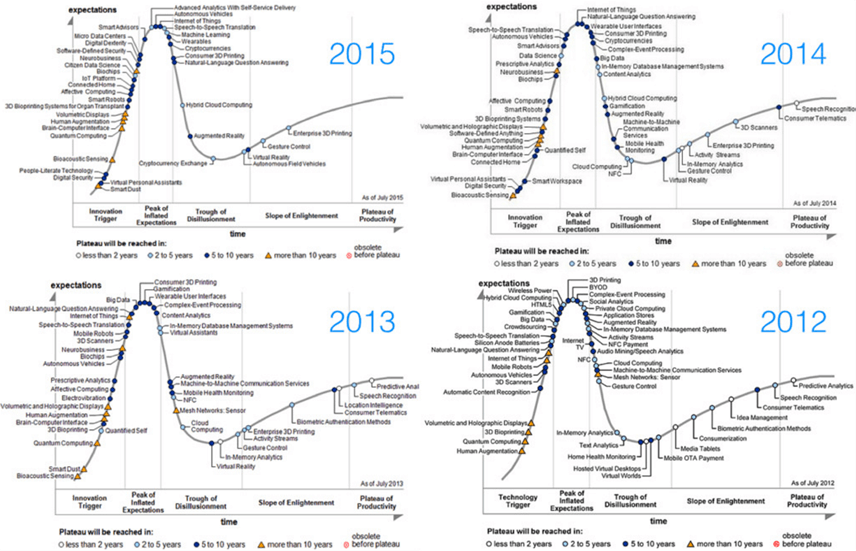In the beginning, there was the hospital: an institution which grew from a need to provide medicine and care and promote health and wellness to the general populace. But as hospitals advanced, incorporating new methodologies, technology, and medicine into their delivery of care, the tools they used to facilitate communication between care teams remained rooted in the Stone Age—until recently.
Even as communication mediums and methods advanced, hospital communication networks were largely cribbed from other verticals, and lacked a dedicated solution built specifically to address the pain points of the healthcare industry.
Although healthcare-specific secure messaging is still a relatively new introduction, more than 70+ secure text messaging vendors now exist in the market. Furthermore, the development of secure messaging technology has rapidly expanded from a simple real-time communication tool designed to simply secure PHI, to a platform facilitating advanced clinical communication processes and improved patient outcomes. Much like the Meaningful Use stages as defined by the ONC of Health IT for the EHR Incentives and Certification program, STM applications seem to be mirroring a similar path of adoption and use by HCOs.
Believe The Hype Cycle
IT research firm Gartner utilizes a ‘Hype Cycle’ model, which visualizes the maturity, adoption and social application of emerging technologies based on conversations with users, early adopters, and solution providers. The Hype Cycle maps out five distinct stages as they pertain to new technology:
Technological Trigger
The potential technological breakthrough that sets the stage for the solution. In the case of healthcare communication applications, the breakthroughs happened organically: first, the rise of smartphones meant that every physician, nurse, and administrator was now carrying a connected device capable of two-way communication. Second, HIPAA enforcement meant that protected health information being transmitted via smartphone devices would be held to rigorous security and encryption standards that native SMS and mass market messaging apps (think the Whatsapp, GChat, and Facebook Messengers of the world) failed to provide. First-to-market solutions recognized the need to provide a secure channel that mimicked the functionality of smartphone messaging that consumers already knew and loved.
Peak of Inflated Expectations
The Peak of Inflated Expectations naturally follows the early success of first-to-market solutions (often accompanied by a number of less-publicized failures). Some organizations, buoyed by the success of early adopters, implemented a solution in the early phases, but the majority wait for the kinks to be ironed out.
Trough of Disillusionment
Interest wanes as experiments and implementations fail to deliver. Producers of the technology shake out or fail. Investments continue only if the surviving providers improve their products to the satisfaction of early adopters. Early-to-market solutions may diversify to verticals beyond healthcare at this point.
Slope of Enlightenment
Current Gartner analysis places the ‘secure text messaging’ market here (though, as the solutions advance, ‘secure messaging’ becomes somewhat of a misnomer. We’re betting on this term as it pertains to healthcare communications being sunsetted within the next year or so.) On the Slope of Enlightenment, more instances of how the technology can benefit adopters start to crystalize and emerge, early to market solutions release second or third generation products (if they’ve been paying attention), and new competitors emerge.
Secure text messaging apps for healthcare aren’t simply secure text messaging apps anymore; HIPAA compliance is a given for healthcare apps, so solutions are beginning to diversify their offerings and build out combination mobile and desktop solutions that underpin the entire communications structure for healthcare systems and hospitals.
Only the most conservative companies are still shirking messaging solutions at this point, and they do so at their own peril. If your organization isn’t currently utilizing a secure messaging solution (and research shows that many aren’t), you may want to start the evaluation process.
Plateau of Productivity
On the Plateau of Productivity, mainstream adoption of a technology starts to take off as market applicability and relevance are established and entrenched. At this stage, around 20-30% of the total market will have adopted a healthcare communications solution, and the rate of adoption will increase exponentially.
 The Gartner Hype Cycle for emerging technologies, year over year.
The Gartner Hype Cycle for emerging technologies, year over year.
Start Slacking
To see the Hype Cycle in action, one must look no further than Slack, the Silicon Valley darling (and fastest growing startup ever.) When Slack hit the market, it wasn’t exactly wanting for another workplace chat/collaboration app (at least not on the surface.) But as a late emerger to the enterprise collaboration market, Slack was able to apply the learnings of their predecessors and ultimately build not just a workplace collaboration app, but an entire communication platform that many organizations are using to even supplant email as their primary channel of communication. Slack’s competitive edge was a deep understanding of how organizations were utilizing messaging applications, knowing what they themselves were looking for in a communications tool, and having a market that was already relatively warm to the idea of workplace messaging.
So how far are we from a ‘Slack for healthcare’? Time will tell, but if the Hype Cycle is to be believed, a truly disruptive solution could emerge within the next few years (or it’s already here). There are plenty of lessons to be learned from the years of smartphone usage in hospital and healthcare settings, but how those lessons are applied depend largely on how eager solution developers are to listen to their customers and the market as a whole.
As for us? We’re all ears.
Want to learn more about where healthcare communications applications are headed and how modern organizations are adopting and implementing them? Watch this free on-demand webinar featuring CEO Ben Moore and Thomas O’Neal, CIO of The Vancouver Clinic.

